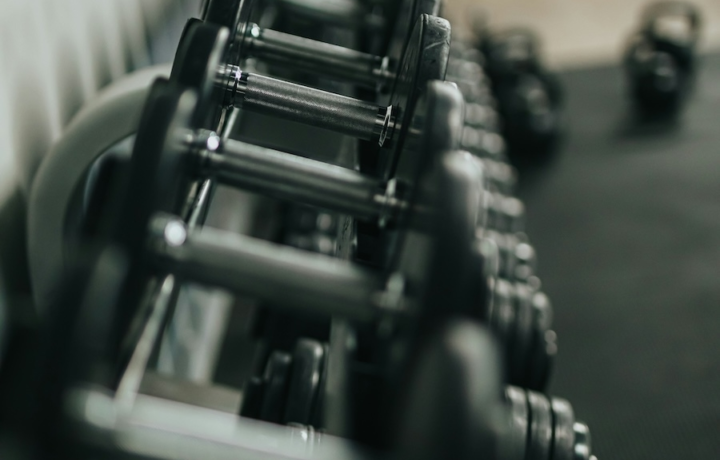Exercise
Cable One Arm Lateral Raise

Cable One Arm Lateral Raise
How to Perform
- Position yourself standing sideways next to a cable machine with a D-handle attachment set at the lowest position.
- Grasp the handle with your outside hand using a neutral grip, maintaining a slight bend in your elbow that will remain constant throughout the movement.
- Establish a stable stance with feet shoulder-width apart, core engaged, chest up, and shoulders pulled back and down.
- Start with your arm across your body, hand positioned in front of your opposite hip with palm facing inward.
- Exhale as you raise your arm laterally in a wide arc until it reaches shoulder height, keeping your wrist neutral and elbow slightly bent throughout the movement.
- Maintain a straight line from your hand to your shoulder, ensuring your shoulder doesn't shrug upward during the raising phase.
- Pause briefly at the top position, focusing on the contraction in your lateral deltoid while maintaining your torso position.
- Inhale as you slowly lower the weight back to the starting position with control, resisting the pull of the cable to maximize tension on the muscle.
Important information
- Keep your torso stationary throughout the exercise—any leaning or twisting reduces the work on the targeted shoulder muscle and may strain your lower back.
- Maintain the same slight bend in your elbow from start to finish; don't lock it straight or bend it further during the movement.
- Focus on lifting with your shoulder muscles rather than using momentum—if you need to swing your body to lift the weight, reduce the resistance.
- For balanced development, complete all repetitions on one side before switching to the other arm.

Cable One Arm Lateral Raise
Exercise Details
Primary Muscles
Muscle Groups
Mechanic
Risk Areas
Built for progress
Take the guesswork out of training
Create personalized AI-powered workout plans that evolve with you. Train smarter, track every rep and keep moving forward, one workout at a time.






The Cable One Arm Lateral Raise stands as a premier isolation movement for developing impressive side deltoid definition. This unilateral exercise employs constant tension through the cable mechanism, creating a unique resistance profile that free weights simply cannot match. By working one arm at a time, you can identify and address strength imbalances while giving each shoulder the dedicated attention it deserves.
This exercise primarily targets the lateral deltoid head, the muscle responsible for that coveted shoulder width and the rounded cap appearance at the top of your arm. While the anterior (front) and posterior (rear) deltoid heads receive secondary engagement, the lateral head bears the brunt of the workload. This focused tension makes the Cable One Arm Lateral Raise exceptionally effective for those seeking to emphasize their shoulder silhouette.
Bodybuilders have long embraced this movement for its ability to isolate and sculpt the side deltoids with precision. The constant tension provided by the cable creates an exceptional pump and metabolic stress, two key factors in hypertrophy (muscle growth). The exercise allows for controlled eccentric (lowering) phases and peak contractions at the top of each rep – elements that are fundamental to the bodybuilding approach of maximizing muscle development through controlled time under tension.
While not overly complex in execution, the Cable One Arm Lateral Raise requires sufficient shoulder stability and body awareness to perform correctly. Intermediate lifters will appreciate how this movement builds upon foundational shoulder training while introducing the benefits of unilateral work and constant tension. The exercise demands proper mind-muscle connection to avoid compensatory movements that could reduce effectiveness or increase injury risk.
Though primarily known as a hypertrophy exercise, consistent training with the Cable One Arm Lateral Raise contributes to functional shoulder strength. The improved lateral deltoid development translates to greater shoulder stability and strength in pressing movements while enhancing overall upper body capability in daily activities.
FAQ - Cable One Arm Lateral Raise
The Cable One Arm Lateral Raise primarily targets the lateral (side) deltoid head, which gives shoulders their width and capped appearance. While the anterior (front) and posterior (rear) deltoids assist in the movement, the lateral head does most of the work.
Stand facing the cable machine with the ankle attachment secured, maintain a slight bend in your supporting leg, and keep your core engaged throughout the movement. Focus on driving the movement from your glutes rather than your lower back, and avoid arching or rounding your spine.
Choose a weight that allows for 10-15 controlled repetitions with proper form. You should feel tension in your lateral deltoid, but not so heavy that you need to swing your body or activate your traps to complete the movement.
You can safely perform this exercise 3-4 times weekly, either as part of your warm-up or cool-down routine. It's particularly beneficial after intense upper body training sessions or on recovery days to maintain shoulder health and function.
Cable lateral raises provide constant tension throughout the entire range of motion, unlike dumbbells which lose tension at the bottom. The cable version also creates a more effective resistance profile at the top of the movement where the lateral deltoid is most challenged.






